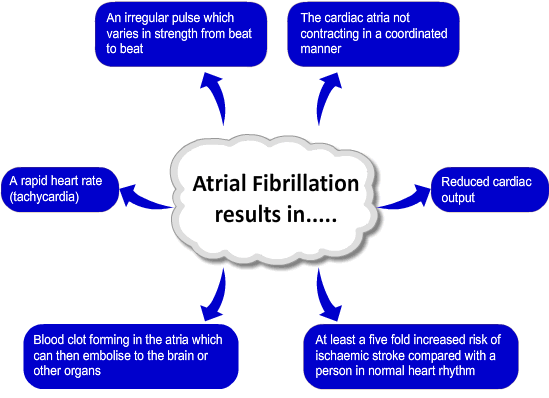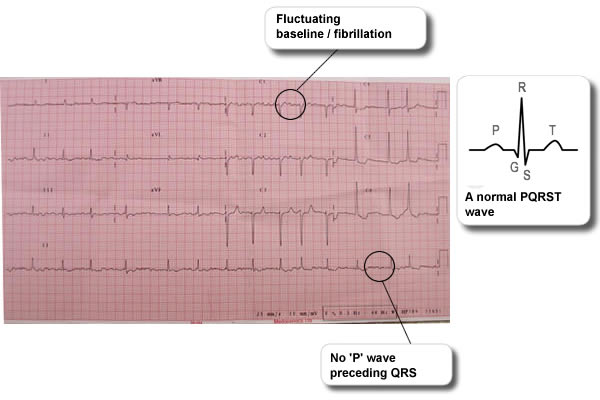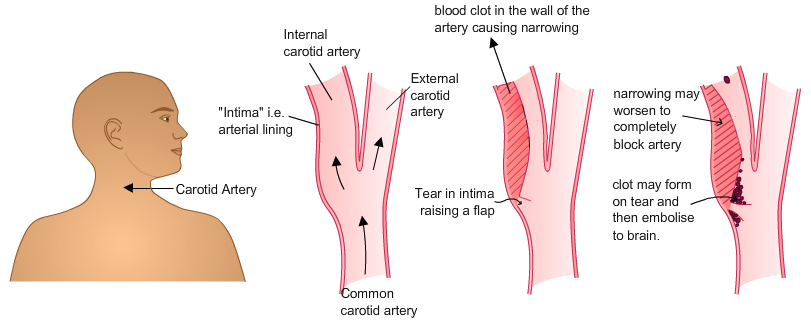Surgical removal if patient is fit enough for open heart surgery. Newer minimally invasive treatment route also being used.
Category: Advancing Modules
Quiz
Atrial myxoma
Introduction
- A very rare tumour usually in the left atrium
- Usually benign but can be malignant
- Pieces of the tumour, or adherent clot, can embolise to the brain or other organs (see animation below)
- Can obstruct the mitral valve causing intermittent reduction in cardiac output
- Can usually be detected on transthoracic or transoesophageal echocardiography. MRI can also be used.
Aims of treatment for atrial fibrillation
- Restore and maintain normal heart rhythm if possible (with cardioversion antiarrhythmic drugs or ablation therapy)
- Control heart rate (with B blockers or digoxin) to optimise cardiac output
- Reduce risk of ischaemic stroke, and embolism to other parts of the body, ideally with anticoagulants but if these are contraindicated, antiplatelet therapy
Consequences of atrial fibrillation (continued)
Press Play to watch the animation above.
Consequences of atrial fibrillation

Atrial fibrillation
Introduction
- Atrial fibrillation (AF) is common and becomes more common with increasing age
- It is often caused by heart disease but may occur in apparently healthy people. Other underlying causes of AF include:
- Hypertension
- Ischaemic heart disease
- Cardiomyopathy
- Cardiac valvular disease
- Hyperthyroidism
- Sinoatrial disease
- It may be triggered by other factors including excessive alcohol intake or caffeine
- It may be permanent, persistent or occur intermittently ( known as paroxysmal atrial fibrillation)

Approaches to treatment
Dissection associated with stroke is relatively uncommon. The evidence for most effective treatments options for carotid and vertebral artery dissection are constantly evolving. Possible treatment options include the following:
- Aspirin or other antiplatelet drugs – relatively well tolerated but unclear how effective
- Anticoagulation can prevent clots forming on the intimal tear but increased risk of bleeding
- Stenting can open up a blocked blood vessel and cover the tear in the intima
- Surgical repair – this is high risk surgery but may be required where the patient is bleeding. Most often done in aortic dissections
Quiz
What features would lead one to suspect a dissection?
Arterial dissection
Introduction
- If the inner lining (intima) of an artery tears, spontaneously or due to trauma), blood can travel into the wall of the artery. This dissection can block the artery or be a source of embolism (see image below).
- Dissection can affect the aorta, carotid or vertebral arteries
- Dissection of the aorta or vertebrals can lead to massive haemorrhage into the chest or subarachnoid space respectively
- Bleeding is very unusual after carotid dissection



